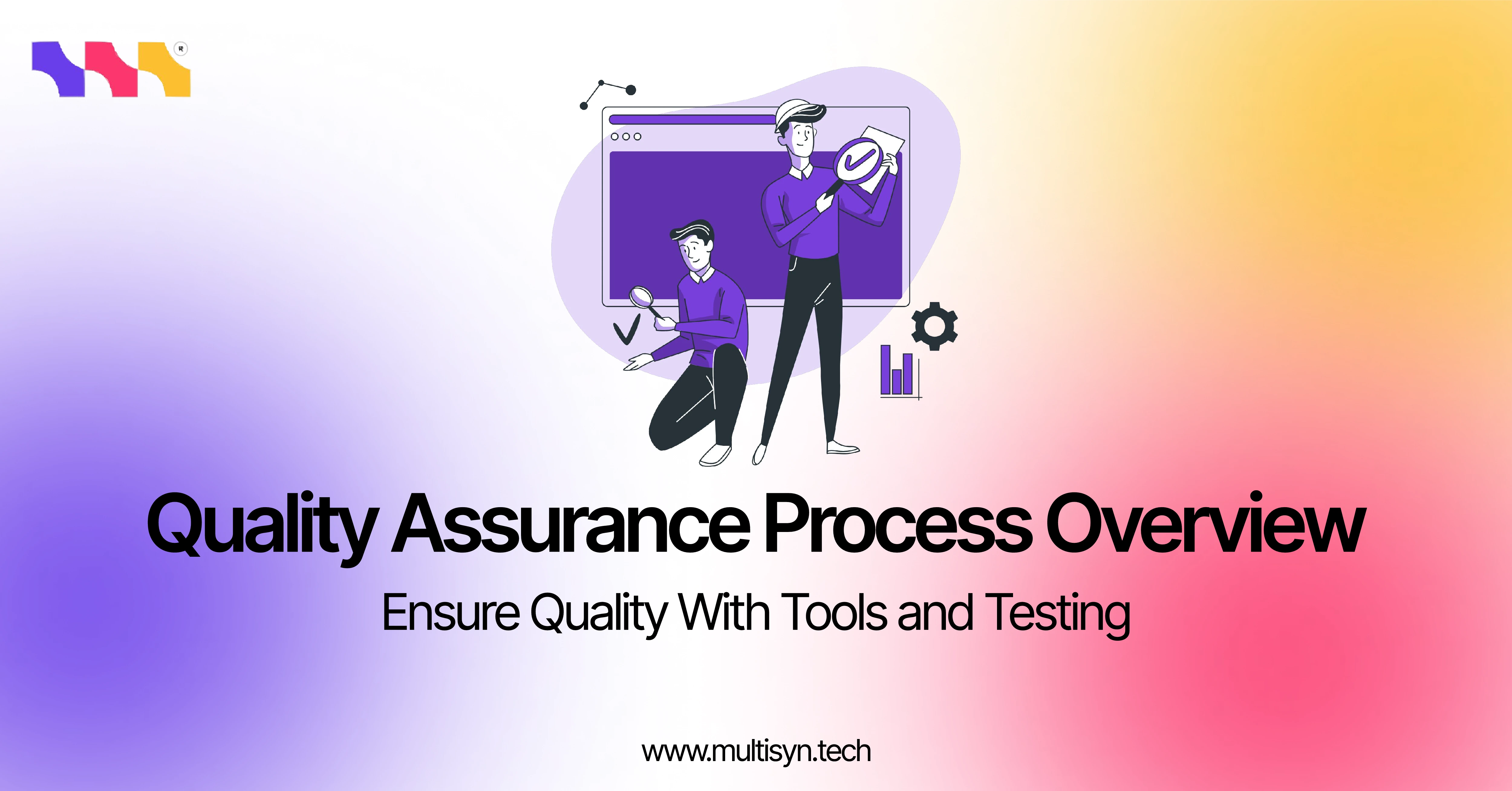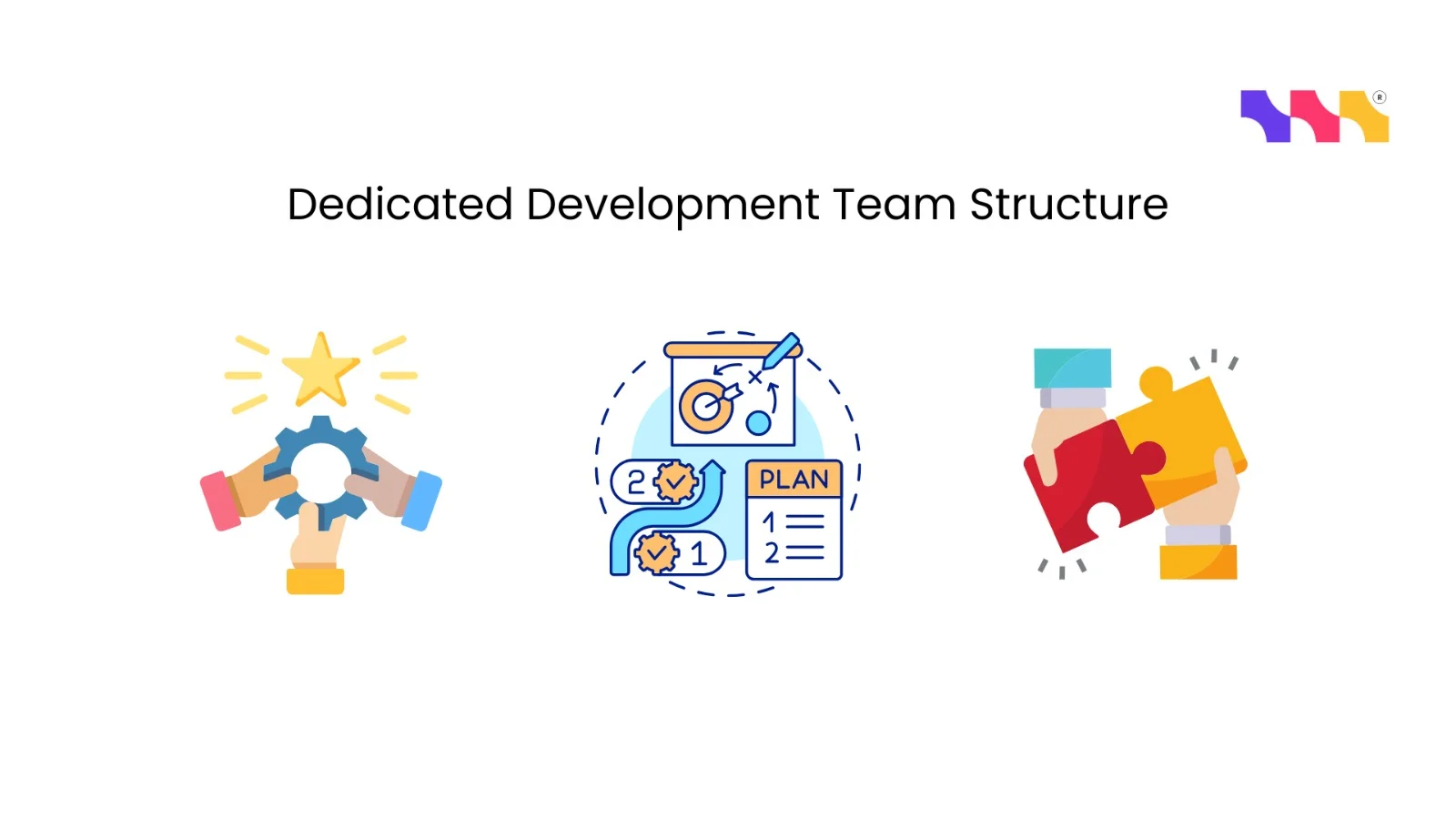Introduction
Customer satisfaction, corporate growth, and success require the provision of high-quality services or products in any business. Quality Assurance (QA) is a vital process that ensures products attain the stipulated standards and expectations of the customers. QA does not simply mean searching in a product, so that it finds the glitches within it, but also making the process of developing as a whole more effective, so that every step made within the process of developing or production results in the most qualitative outcome. We will discuss the QA process, job roles, services, tools, and how working with a QA agency such as Multisyn Tech could enable you to obtain better outcomes, ultimately, in this in-depth guide.
What is Quality Assurance (QA)?
Quality Assurance (QA) is a formal method of guaranteeing that goods or services are designed in line with already established standards, which would lead to holding consistency, reliability, and performance. It is easy to mistake QA with Quality Control (QC), though the two concepts differ. Whereas in QC the objects subject to checkup are manufactured products, QA aims at anticipating the defects, through bettering the procedures that result in production. QA is a proactive activity, which makes sure the quality is a part of each step of the product or service development.
Quality Assurance has all the phases of the life cycle of a product, starting with conception till its development, testing, release, and maintenance. The end product of QA is to ensure that the final product satisfies the customer and industry standards. The QA test will ensure that, whether in use, a software application, manufacturing process, or any service delivery, quality is never compromised.
The QA possesses
An effective QA plan is a step-by-step approach to providing products or services to the required quality levels. Details of the standard QA process, along with each step in the process and its responsibilities, are shown below:
1. Requirement Analysis
QA process commences with the detailed reading of the requirements of the product. This is the basis of the QA plan because it helps the team see what the final product should be and what the quality standards are that it should comply with. The requirements need to be well stipulated, and all the stakeholders (product managers, developers, and clients) need to agree to them. The aim of this phase is usually to collect both the functional and non-functional requirements, user expectations, as well as compliance specifications.
2. Test Planning
After the analysis of requirements, it is time to develop a thorough test plan. In this plan, the strategy of testing will be outlined, including objectives, schedules, resources needed, and the specific tools that will be involved. The test plan is a kind of roadmap of the whole process of QA, as the team can follow all the stages and make sure that the testing strategy is consistent with the general purposes of the project.
There are different types of testing covered in a well-designed test plan, and they include functional testing, performance testing, security testing, and usability testing. It is also concerned with how the testing will be performed, the extent of testing, as well as the evaluation of risk and quality measurement.
3. Test Design
Once the test plan has passed the approval, the next step is test design. This is done through the development of specific test cases and test scripts as per the requirements of the product. The test cases are made to ensure the correct working of the product, its performance, and its security levels by checking the correct functioning of the product features.
Test design will also involve the identification of the environment under which these tests will be carried out, say browser compatibility with web-based applications or specific OS with mobile applications. Every test case contains the anticipated outcome, data that will be required, and the actions that have to be taken when carrying out the test.
4. Test Execution
The phase of running tests is when the QA team will be performing the tests. They test the product by running the pre-designed test cases and scripts on it to assess its performance. At this stage, the testers find defects, errors, and issues that can have an impact on the product functionality or performance.
Testers record the problems they encounter and pass them to the development team to address. The results of the test are explained in full, such as the actions to follow in order to repeat the problem, severity, and importance. The stage would be vital since it would enable it to find out possible flaws of the product before issuing it to the customers.
5. Bug Tracking and Fixing
After identifying a bug or defect, it is passed over to the development team. Bugs are classified as per severity (critical, major, minor) and priority (urgent, high, low). The team of developers then tries to correct the errors, and the QA team once again tests the item in order to ensure that the bugs have been resolved.
Close communication between the QA and development teams has to be maintained during this phase so that defects are fixed effectively. The last stage after the problems are successfully fixed is a final testing to ensure that no other defects are introduced in the product.
6. End control and Freeing
When all the problems are solved, the QA team conducts a final examination of the product. This assessment makes sure that every case within the test has gone through successfully and that the product complies with the needed level of quality. Then the product is released or deployed.
The final testing can even involve other tests, such as performance testing or user acceptance testing (UAT), to make sure that the product is viable enough to be used. After the product is cleared, it will be set to the customers or end users.
Major Roles of Quality Assurance
Quality Assurance requires a number of functions, performed consecutively towards testing the product to guarantee achievement of the required standard. The most critical roles in the QA process are as follows:
1. QA Engineer
The QA Engineers are engaged in the implementation of the tests and managing the product to make sure that it works properly. They collaborate with the development team in case they see something going wrong and note down defects. They will also design test cases and make testing as comprehensive as possible.
2. QA Manager
The QA Managers are individuals who are in charge of the QA process and are therefore responsible for checking whether the team is adhering to the intended testing procedures. This is their duty to take care of resources, schedule, and communicate with the stakeholders, so that the project will not be off track. QA Managers also look at the testing output and make sure that the quality standards are achieved.
3. Test Analyst
Test Analysts mainly aim at developing and running tests according to the project specifications. They carry out functional and non-functional testing to make the necessary assertion that the product will meet the required quality standards. Exploratory testing is one practice carried out by Test Analysts to reveal defects that are not apparent.
4. Automation Tester
With the help of special tools, Automation Testers automate test scripts. This limits the usage of manual intervention, accelerates the testing process, and provides a unified consistency in testing outcomes. Automation is of special account in repetitive tasks like regression testing.
5. Security Tester
The task of Security Testers is to perform security audits and penetration testing that allows one to guarantee that the product is secure. They exploit security holes, probe for possible threats, and collaborate with the developers to reduce risks before product release.
Important QA Services
The Quality Assurance services may vary depending on the kind of product or service under test. Some of the most prevalent QA services supplied by agencies such as Multisyn Tech are:
1. Manual Testing
Manual testing implies human testers who consider the workability and usability of the product. Exploratory testing is commonly a manual exercise in which testers act upon their intuition to unearth defects beyond the scope of an automated test.
2. Automated Testing
Automated testing is where special software is used to perform pre-recorded testing. Automated tests have been well-established, are repeatable, and are reliable. They come in handy where frequent re-runs are necessary, such as in regression testing and load testing.
3. Performance Testing
Performance testing is used to determine the way in which the product performs with varying loads. This comprises load testing, stress testing, and scalability testing; these are important in making sure that the product will be able to support real-world usage.
4. User Acceptance Testing (UAT)
User Acceptance Testing (UAT) is the testing of the product by the end-users to make sure it addresses the end-users' needs and expectations. UAT is done to make sure that the product is user-oriented and a real-world application.
5. Security Testing
Security test determines the vulnerability in the product and also secure the product against the threat of the cyber world. It involves testing penetration, vulnerability tests, and security audits.
6. Compliance Testing
Compliance testing guarantees that the product is meeting the industry/regulatory regulations. This may consist of compliance testing, data protection laws, and accommodating regulations.
Why choose Multisyn Tech as a QA provider?
Multisyn Tech is one of the global leaders in Quality Assurance services, providing a comprehensive set of testing services and catering to a wide range of industries. This is why companies hire us to take care of their QA:
1. Expert knowledge and Experiences
We are a group of top-qualified specialists who have long experience in quality assurance. Our skill and expertise in any given project are immense, with every project getting a rigorous testing regime and marked improvement in results.
2. Tailored Solutions
We realize that there are no two businesses that are the same, and we do not provide blanket QA services. You are going to need manual and automated testing, performance optimization, and we will customise our services to your project needs.
3. Cost-Effective Solutions
The provision of QA services by Multisyn Tech should also allow you to minimize expenses through the use of our experience and capabilities. Our scalable services will work together with your business to enable you to get the best testing services at the cheapest rates.
4. Efficacy and Velocitiness
When the tools and the processes are right, we can have shorter turnaround times, and we are not sacrificing quality. We can provide results in the shortest period because of our automation tools and well-optimized work processes.
Conclusion
Quality Assurance (QA) form’s part and parcel of any development/production procedure. It guarantees quality products that users expect and work as they are supposed to work. Learning about the QA process, roles, and services would help businesses to curate the quality of their products better, lower the number of faults, and raise customer satisfaction. The partnership with a professional QA agency, such as Multisyn Tech, will ensure that goods developed by a business are test-ready and poised towards success. Whether it is manual testing, automated testing, or even performance optimization, QA services are critical to the provision of high-quality results and the attainment of business goals.







